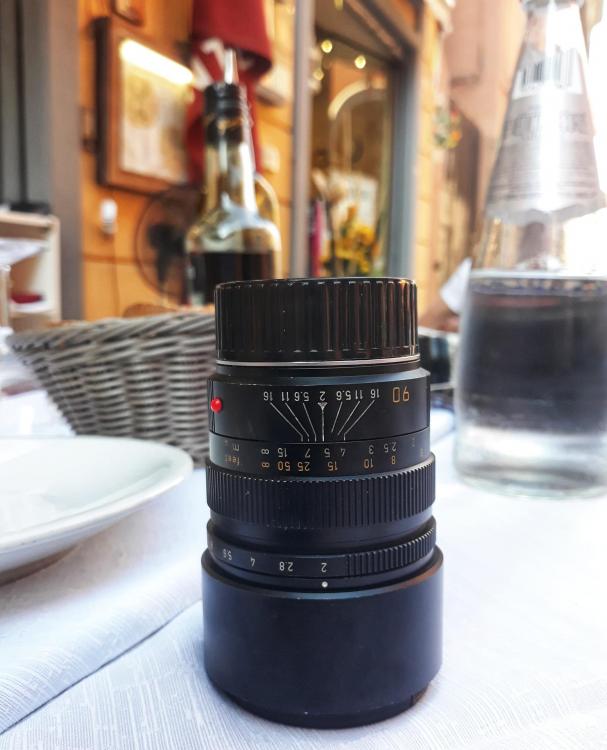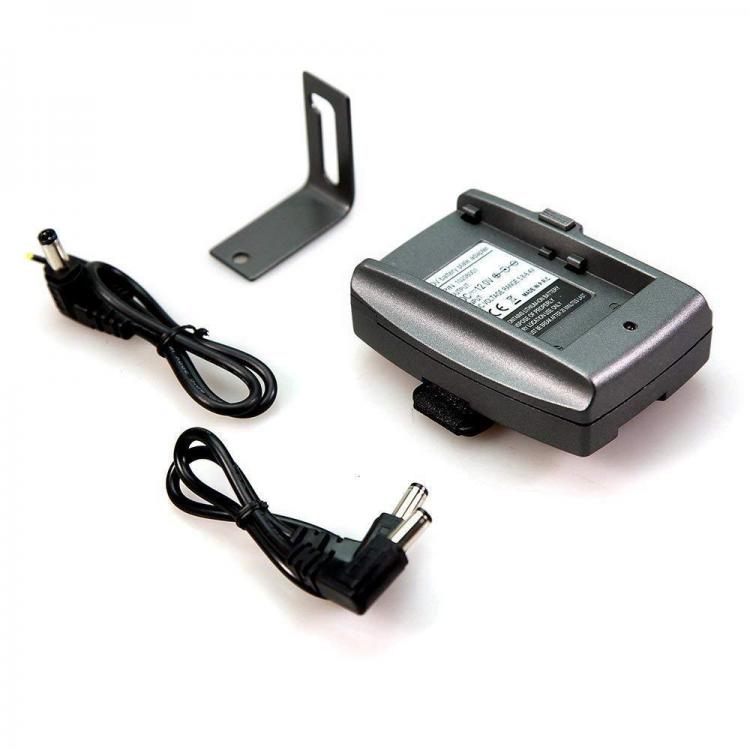-
Posts
5,964 -
Joined
-
Last visited
Content Type
Profiles
Forums
Articles
Everything posted by BTM_Pix
-
I think BM will do well with ths box. Official support by both Apple for the OS and BM for Resolve should mean not only reliability but also a high degree of optimisation. Obviously with the emphasis on should. That, and being available to walk into an Apple store and take one home, will probably tip the balance for people over the better value available by rolling their own solution. And the value is all relative of course if you have to factor in your own time in the initial setup and configuration, potential conflicts and troubleshooting when either the OS or Resolve gets updated and the performance gap being narrowed anyway by optimisation. Realistically, most people want enough power to get the job done and anything above that is a bonus. If this bumps 13" Macbook Pro power enough to deal with Pocket 4K footage efficiently end to end then I think that is a large audience right there. In the same vein, I expect to perhaps see BM release a repackaged version of the Fairlight audio accelerator at IBC to do for audio what this is doing for video. If it's a similar price (and it will probably be less) then that will mean BM will have put the power of what were not that very much long ago absolute elite end tools on our desktops for about £1000. Increiblde really to think that when we would install Fairlight FAME consoles it was routine for a team of 3 of us to be on site to commission it for at least 3 days anywhere in the world and you can now just download it !
-
My eyes are watering just imagining what such a contraption would do. Auto correct obviously decided you wanted to literally have a balls up situation instead of avoiding a balls up of the audio variety.
-
My problem with looking for things to adapt to M mount was that I started looking at real M mount lenses and well one thing led to another.... In my defence it was a bargain. In Leica terms at least
-
I like the versatility of the mount itself but I suppose that just encourages trying to shoehorn inappropriate lenses on to it and the amount of adapters that I own is now reaching ridiculous levels. The most sensible mount for me now is fast becoming the e mount. Sigma upping their game with lenses for it has helped, their electronic adapters for their EF and SA mount lenses are another boon and I've just got the TechArtPro adapter so now I've got AF for all of my manual lenses (within reason). It also means though that I've now had to go and get yet more adapters to convert the other mounts to Leica M as thats what the TechArtPro takes !
-
Our new member @Branko Mitic has a blog post on his site comparing the C100 with the 1DXii that has some really useful insights. https://brankomitic.com/canon-c100-vs-1d-x-mark-ii-video-use/
-
Really interesting piece and blog post. And +1 on that bag from Decathlon. I have them empty in the bottom layer or laptop section of my real camera bags when travelling for times so I can use them for making smaller sub-kits. I've re-posted your C100 blog post in another thread by the way as the comparison you have done there is very relevant.
-
-
16mm movie camera and latterly CCTV camera lens mount. Veydra did/do a mount adapter for it and then £10 dumb mounts can get it on to all your different cameras.
-
Wouldn't the C mount be the best option for you to put on the Veydra's Jon and then you can use cheap C mount adapters to be able to quickly swap them between using them on your GH5, X-T2 and A7III (in crop mode) ?
-
You're not fucking about when it comes to buying lenses for that camera are you!
-
Unfortunately not. I tested it with the shutter angle commands and they are inoperative on the GX80/5
-
As a combined mixer/recorder it would be very useful for me in an all round role for live event webcasting and music recording. But, yes, perhaps 'pressed into field recording' should have read 'shoehorned rather clunkily'. With that number of simultaneous recorded tracks I could live with using LTC and the remote start is an easy fix for me but the dynamics being post A/D and no safety track is unfortunate. As the Black Knight would say in The Holy Grail, though, "I've had worse" ! Anyway, back on topic, how did the F8n work out today ?
-
If you use the Panasonic app on Android or iOS you can use its manual focus control function to check to see if it can drive the lens from there at the different focal lengths. That should at least give you some indication if the motor is defective for some reason at those focal lengths. While you have to app open, also do the Touch AF from it to see if it can AF via that route at those focal lengths as well. It won't fix it but it will give you a few more clues to go on.
-
I saw the 12 track version of the Livetrack in a music shop a couple of months ago and they certainly cram the features in. Looking at the power requirements, for anyone who could deal with the form factor, it could actually also be pressed into field recording using the old SmallRig 12v from NP battery adapter for the BMPCC
-
I haven't got one of those cameras to test it with but it works irrespective of the language setting on the GX80/85 so I can't see why it wouldn't from the point of the commands. However, I would say you should test it yourself before buying it just in case there is something different in the firmware of the Japanese version (and there might possibly well be) that stops it from working.
-
I'm wondering whether this is where this link up between the two might be going where when Apple does enable eGPU in FCPX it will only be for the BM product. Makes sense from a support point of view to only have one variable but also from a financial point of view if Apple are selling them in their own stores.
-
Oh I'd be shilling with the best of them if they sent me free stuff and paid for me to go on their junkets
-
Sorry, yes, I meant summaries of the YouTube videos by the YouTube creator themselves. I think there is definitely a place for a site that acts as a curator for quality YouTube videos that aren't tainted by overtly dubious agendas though. I've no problem with people making money from affiliate links as actually making money creates better content generally but I'd prefer them to be non-product specific. That way you can have a review that says "actually this product isn't very good but there are others available that are that you can buy through my affiliate here My rule of thumb is also to disregard any "reviews" that are from manufacturer product launches. The reviewers are all desperate to be first out of the gate with reviews and being invited to these product launches ensures that they will be in that position. So it's not so much a case where once you accept travel, accommodation and food being paid for then you have already been bought (though that's not a difficult case to make) but more that they can't jeapordise being in the first wave for reviews for the next product by not being invited to it.
-
Unfortunately the most succinct summary for a lot of them would be "Please click my affiliate link below".
-
I have a Mamiya 35mm and will probably pick up the 210 tomorrow. I've got a Nikon adapter as a conduit to the other mounts via speedboosters. They do an 80mm 2.8 as well (which I haven't got one of yet) so it's not a bad system to get in to either. http://slrlensreview.com/web/reviews/misc/mamiya/mamiya-standard-645/474-mamiya-645-80mm-f28-lens-review Mattias has done a very interesting video on his YouTube channel that you should check out using the KiponBaveyes speedbooster on full frame E mount. I'll post a couple of frames from the Mamiyas when I get back at the weekend.
-
Yeah, I think you're right that he didn't use it in the 4K mode when recording externally. Looking at the comments on another test subsequent test he did, he actually did end up buying a couple of 5D Mark IVs and he seems very responsive to questions so it might be worth dropping him a comment on there and asking him if you don't get an answer here. He has a 1DX Mark2 as well so he should be able to shed the most light on it.
-
This test at least shows that someone has done it and shows some comparison to it's internal recording. It's primarily a test to show the 5D Mark IV and C100 being cut together on a 1080p timeline but to determine the best method he generates the 1080p from the 5D Mark IV via a downsample of internal 4K recording , an internal 1080p recording and an external 1080p to an Atomos. Anything labelled as 422 LT on the video is the externally recorded version.
-
I know, I put that in the subsequent post and was just showing the coverage on a full frame stills camera as those were the only examples in a search.
-
If it were me, I'd be tempted to get the Leica M mount version of it instead. Reason being that if you stick with Sony then down the line you can buy a TechArt Pro adapter and get it to auto focus and if you don't stick with Sony (or want to use it with other cameras) it can adapt to every other mount cheaply. Whereas with the e mount you would be locked in. Steve Huff did a shootout between the two versions and found some differences but frustratingly it's not clear whether he did the retest with some setting changes that might have been the cause of it. http://www.stevehuffphoto.com/2018/02/22/quick-shoot-out-voigtlander-40-f-1-2-m-mount-vs-voigtlander-40-f-1-2-e-mount/








